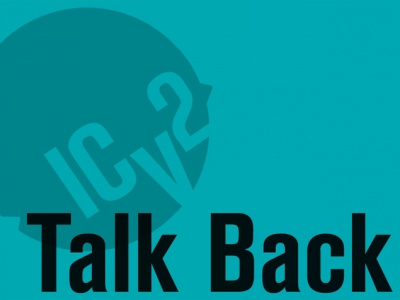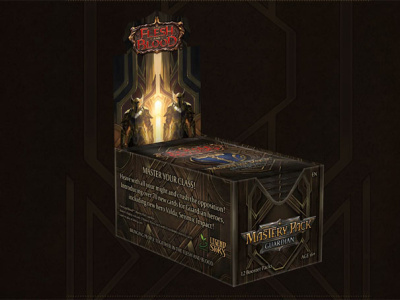Sharpening the Sword is a regular column by John Riley, who owns Grasshopper's Comics, a 1300-square foot comic and game store in Williston Park, New York. This week, Riley talks about how to apply the concepts of angel and demon customers to game retailing:
Last week we talked about the concept of 'angel' and 'demon' customers, and how one contributes significantly and efficiently to your store's profits while the other presents a drain on resources that may outweigh their value. This week we're going to talk about how that concept can be applied to the gaming end of our business, and next week we'll explore it in comics.
I ended last column with the statement, 'We're running businesses, not clubs.' Now clubs and a sense of community are an important part of our business. But all too often I think we find ourselves in club thinking (I know I do) and that can be dangerous. You see, a club is exclusively about satisfying the wants of its members. But a business has to satisfy its own needs, and sometimes they can be quite different.
Here's an example of how this worked in our store.
For years Friday nights in our store were focused on roleplaying and CCGs. Typically many of the people spanned both groups and would play some cards and then roleplay or vice versa. But over a period of time almost all of the CCGs we played died off, leaving this group concentrating on roleplaying at a time of great flux in RPGs. Essentially, these gamers didn't know what to do with themselves. We tried to get them to join in on new games and events that we were playing, but they were very resistant. But they still came in every week to sit, talk, and sometimes roleplay. Considering that a group of ten roleplayers can play for months on one $20 book, this wasn't a good situation for us. The group grew increasingly more unfocused, spending a greater percentage of time each week just socializing. In the meantime we were turning away people for other games who couldn't play for lack of space.
So here we had some 'demon' customers who now used up an incredible amount of resources but were generating almost no revenue. And we were turning away our 'angels' for lack of space. But (and here's where club thinking comes in) we were friends with these people and didn't want to make any of our customers unhappy, let alone turn them away. We wanted to keep them as customers, but weren't sure what to do.
Our solution was to change the environment. In an effort to find a win-win we removed all our traditional card tables and built all custom gaming tables. These tables were focused on miniatures play and were taller than the other tables so that people could stand and play. By removing all the chairs we were able to fit many more people in the same space. We told the roleplayers they were still more than welcome to come in and play, but like everyone else they'd have to stand (the miniatures players happily stood and played eight hours at a time so we didn't think it was a problem). And with this new design more people could play and everyone would benefit. We thought it was a very happy solution.
What we found out was that a good portion of these 'gamers' really didn't want to sit and play, they just wanted to sit. They complained about standing and a number of other things. But their biggest complaint was all the new players who were now coming into 'their store'. Now we liked these gamers, really did, but in this case satisfying their wants would have put us out of business. Eventually, the majority of them left to 'hang out' elsewhere, but we were able to get the rest back into active gaming. And thanks to our new layout we added about ten new active customers for each one we lost. We catered to the angels by providing more space tailored to their needs, attempted to 'redeem' the demons, and our sales went up dramatically.
As we move forward our efforts are focused more on targeting the right customer groups. For example, we find historically that our greatest sales revolve around acquiring new hobbyists. But after taking a long hard look at our store it became apparent that our store was really formatted more to appeal to the customers we already had. As a result, we're changing both our physical appearance and our events/promotions to make it as easy as possible for a person to join our exciting hobby. This isn't to say that we're taking anything away from our promotions and efforts for our existing customers. We're just adding in areas that we're a bit weak on.
Here are some questions involving this concept that I asked myself:
- What is my ideal customer? What customer type generates the greatest revenue over a one-year time period?
- In what area of my store do I have the highest margins?
- What area of my store has the greatest long-term sales potential?
- Do my layout, displays and events make it exciting for this customer to be in my store?
- Are there games/product areas/customer groups that I dedicate a lot of resources to that don't generate a proportional amount of revenue?
- Am I doing everything I can to take care of my customers that generate the greatest profit?
If you're like me you'll probably find that you're doing some things great, spending a bit too much time and effort on some things and not enough on others. But that's ok, that's why we're learning. The way I figure it, if Best Buy, which is rather successful, can use this tool to improve its business, I'm sure I can use it to tweak mine a bit.
I know our stores are as different as each of us, but I hope this gives you a starting point to apply this concept to your store.







